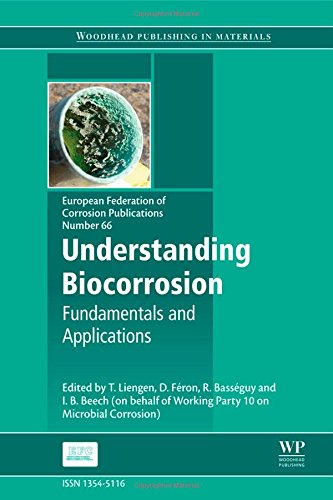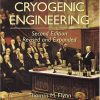Understanding Biocorrosion Fundamentals and Applications 1st Edition by Liengen, Basseguy, Feron Damien, Beech, Birrien 1782421254 9781782421207
$50.00 Original price was: $50.00.$35.00Current price is: $35.00.
Understanding Biocorrosion Fundamentals and Applications 1st Edition by Liengen, Basseguy, Feron Damien, Beech, Birrien – Ebook PDF Instant Download/Delivery: 1782421254, 9781782421207
Full download Understanding Biocorrosion Fundamentals and Applications 1st Edition after payment

Product details:
ISBN 10: 1782421254
ISBN 13: 9781782421207
Author: Liengen, T; Basseguy, R; Feron, Damien; Beech, I; Birrien, V
Biocorrosion refers to corrosion influenced by bacteria adhering to surfaces in biofilms. Biocorrosion is a major problem in areas such as cooling systems and marine structures where biofilms can develop. This book summarises key recent research in this subject. Part one looks at theories of biocorrosion and measurement techniques. Part two discusses how bacteria and biofilms result in biocorrosion. The final part of the book includes case studies of biocorrosion in areas as diverse as buildings, fuels, marine environments and cooling systems.
- Provides a detailed overview of biocorrosion and the different scientific and/or industrial problems related to microbially induced corrosion
- Introduces a variety of investigative techniques and methodologies that are employed in diagnosing and evaluating microbially induced corrosion
- Includes case studies on: biodeterioration of building materials; biocorrosion issues associated with diesel and biofuels; marine biocorrosion; corrosion of open recirculating cooling water systems and cooling system components; the effect of H2S on steel corrosion
Understanding Biocorrosion Fundamentals and Applications 1st Table of contents:
Part One: Turbomachinery Development
1: Understanding corrosion: basic principles
1.1 Introduction
1.2 Materials and surfaces
1.3 Basic corrosion processes
1.4 Main forms of corrosion degradation
1.5 Conclusion
2: Biofilms and biocorrosion
2.1 Introduction
2.2 Biofilms
2.3 Corrosion and biocorrosion
2.4 Molecular techniques for the investigation of biofilm communities
2.5 DNA microarrays
2.6 Mass spectrometric metabolomics for the study of biofilm-influenced corrosion
2.7 Conclusions
Acknowledgements
3: Molecular methods for studying biocorrosion
3.1 Introduction
3.2 Requirements for molecular biological studies
3.3 Molecular methods based on the analysis of the 16S- and 18S-rRNA gene sequences
3.4 Functional genes as a molecular tool
3.5 Other useful methods
4: Sulphate-reducing bacteria (SRB) and biocorrosion
4.1 Introduction
4.2 Microbially induced corrosion (MIC)
4.3 Sulphate-reducing bacteria (SRB): bringing together hydrogen, sulphur and nitrogen biocycles
4.4 Electron transfer (ET) processes relevant for SRB
4.5 Bacteria and metal surfaces: influence of extracellular polymeric substances (EPSs)
4.6 Useful methods and tools for MIC assessment
4.7 Conclusions
Acknowledgements
5: Electroactive biofilms
5.1 Introduction
5.2 Different types of electron transfer mechanisms
5.3 Examples of electroactive biofilms (EABs) from the lab
5.4 EABs and technological applications
5.5 EABs and biocorrosion
5.6 Conclusions
6: Immobilization and trapping of living bacteria and applications in corrosion studies
6.1 Introduction
6.2 Materials and methods
6.3 Immunoimmobilization, trapping bacteria and applications
6.4 BiyoTrap and applications
6.5 Conclusions
Acknowledgements
Part Two: Evaluating and modelling biocorrosion
7: Physical and local electrochemical techniques for measuring corrosion rates of metals
7.1 Introduction
7.2 Global measurement of corrosion rate
7.3 Electrochemical techniques for monitoring generalized corrosion
7.4 Electrochemical techniques for monitoring localized corrosion
7.5 Conclusions
8: Surface analysis techniques for investigating biocorrosion
8.1 Introduction
8.2 X-ray photoelectron spectroscopy (XPS) analysis
8.3 Time-of-flight secondary ion mass spectrometry (ToF-SIMS) analysis
8.4 Combining different analysis techniques
8.5 Conclusions
9: Modelling long term corrosion of steel infrastructure in natural marine environments
9.1 Introduction
9.2 Models and modelling
9.3 Models for corrosion
9.4 Factors involved in marine corrosion
9.5 Microbiologically influenced corrosion (MIC)
9.6 Corrosion loss model
9.7 Effects of nutrient pollution
9.8 Accelerated low water corrosion (ALWC)
9.9 Evaluating the effect of nutrient pollution
9.10 Conclusions
Acknowledgements
10: Modeling mechanisms in biocorrosion
10.1 Introduction
10.2 Corrosion diagrams
10.3 Interfacial changes due to microbially influenced corrosion (MIC)
10.4 Localized corrosion
10.5 Modeling
10.6 Conclusions and recommendations
Part Three: Case studies
11: Biodeterioration of concrete, brick and other mineral-based building materials
11.1 Introduction
11.2 Biodeterioration of natural and man-made building materials
11.3 Microorganisms that cause the biodeterioration of mineral-based materials
11.4 Factors contributing to the biodeterioration of mineral-based materials
11.5 Symptoms of mineral-based material biodeterioration
11.6 The case of concrete biodeterioration
11.7 The case of bricks and mortar biodeterioration
11.8 Conclusions
12: Biocorrosion issues associated with the use of ultra-low sulfur diesel and biofuel blends in the energy infrastructure
12.1 Introduction
12.2 The need for cleaner diesel fuel
12.3 The impact of organosulfur compounds on anaerobic metabolism
12.4 The impact of desulfurization on diesel fuel stability
12.5 Assessment of diesel additives: fatty acid methyl esters (FAME)
12.6 Fuel composition and inocula are equally important
12.7 Conclusions
13: Understanding marine biocorrosion: experiments with artificial and natural seawater
13.1 Introduction
13.2 Effect of nutrients and oxygen removal on biocorrosion
13.3 Comparison of experiments in natural and artificial seawater
13.4 Variability in the composition of natural seawater
13.5 Conclusions
Acknowledgements
14: Managing open recirculating cooling water systems to minimize contamination and corrosion
14.1 Introduction
14.2 Description of the scope of the work
14.3 Conclusions
14.4 Sources of further information and advice
Acknowledgements
Appendix 1 Scope of the work document for open recirculating cooling water systems, 1/31/2013, Company X, Plant X, supplier service requirements
Appendix 2 Guidelines for best practices for the control of Legionella, July 2008
15: Risk assessment of biocorrosion in condensers, pipework and other cooling system components
15.1 Introduction
15.2 Biofouling/biocorrosion
15.3 Biocorrosion risk mitigation
15.4 Monitoring systems
15.5 Conclusions
16: The effect of H2S on the corrosion of steels
16.1 Introduction
16.2 Carbon steel and low alloy steels in H2S containing solutions
16.3 Stainless steels: microstructures and corrosion
16.4 Conclusion
Index
People also search for Understanding Biocorrosion Fundamentals and Applications 1st :
undamentals vs basics
how to understand fundamental analysis
what are the basic fundamentals of life
understanding biology
Tags:
Liengen,Basseguy,Feron Damien,Beech,Birrien,Understanding Biocorrosion



